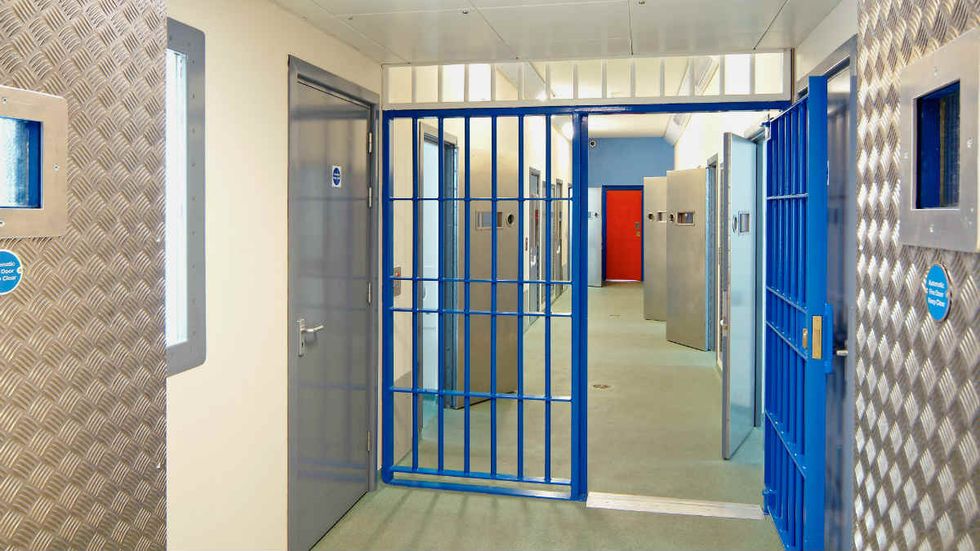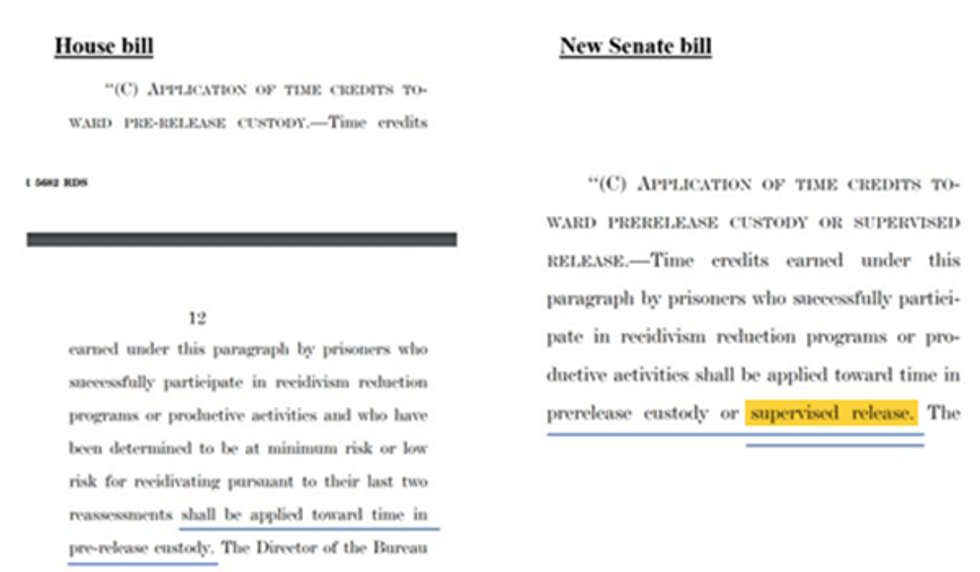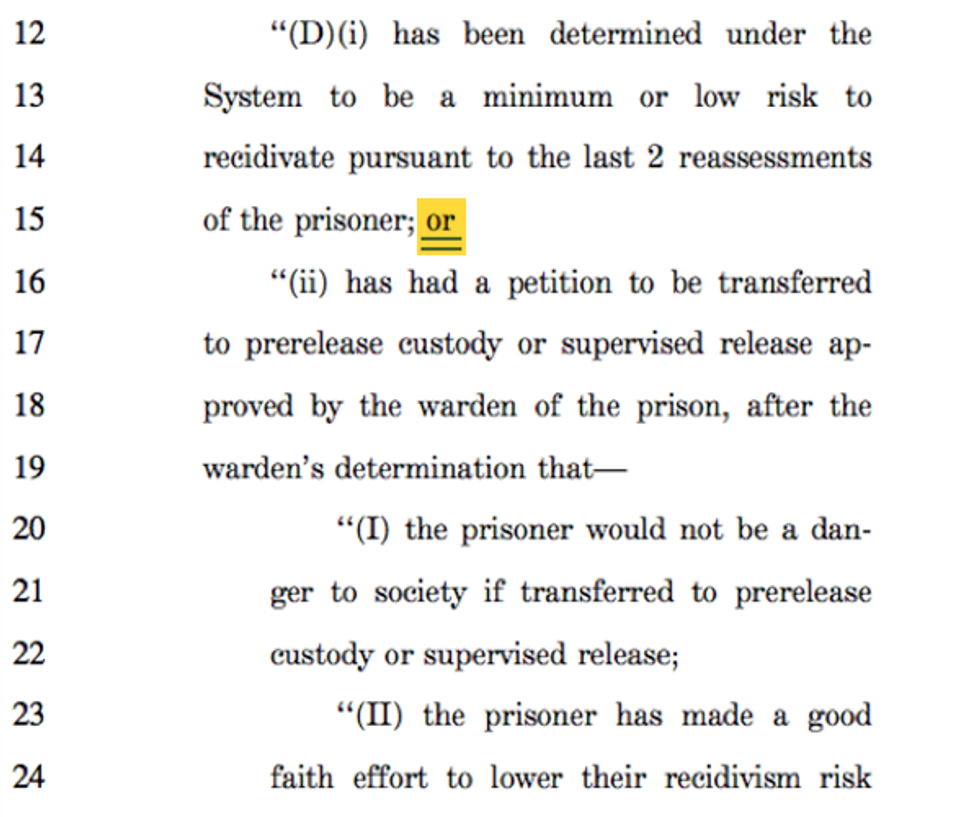
© 2024 Blaze Media LLC. All rights reserved.
Yes, the ‘prison reform’ bill lets out high-risk inmates and sex offenders
December 04, 2018
The criminal justice reform bill, oops, I mean “prison reform,” was crafted precisely with the intent of reducing the federal prison population, even though it has already declined from the 1990s levels. Now that the public has gotten wind of the odious nature of this bill and are appalled by the philosophy propelling it, suddenly the leading voices for it are claiming that nobody gets early release, including sex offenders. The text of the bill and the opinion of the Department of Justice prove otherwise.
First, when supporters say nobody is released early from prison under this bill (aside from the drug traffickers who get sentencing reduction on the front end), they are saying that home confinement and halfway houses are not early release. Before we get into the fact that this bill does offer complete early release, let’s not forget the consequences of mass home confinement of convicted criminals. While the system already has a process for good time credits and home confinement, this bill would offer such an arrangement for tens of thousands of prisoners for as much as one-third of their sentences. As I’ve noted before, the security apparatus for home confinement is already a joke, and nobody has explained how law enforcement would have the resources to deal with this in such large numbers. The bill doesn’t appropriate enough funding to deal with this, because proponents want to preserve the talking point of saving money, even though the Bureau of Prisons has confirmed that home confinement costs almost three times more per diem than a federal prison.
But it’s worse than that. This bill allows these convicts to leave home confinement for numerous activities, including ridiculously vague “job-seeking activities.” Indeed, these people, many of whom are irremediable gangbangers, will continue their trade of drug trafficking.
It gets worse still. Turn to page 12 of the bill and you will see that the Senate bill added a clever trick over the original version.
Notice how the Senate bill adds a second option for the outcome of time credits: “supervised release.” That is straight-up early parole, not even in a less secure home confinement.
Now, let’s turn back to those eligible for such credits, which are earned simply by doing what they do now and Orwellianly defined “productive activities.” A number of federal sex offense convictions are not included in the exceptions from early release credits. Here are at least 4 of them:
- 18 U.S.C. 2250 – failure to register as a sex offender
- 8 U.S.C. 1328 – importing aliens for prostitution
- 18 U.S.C. 116 – female genital mutilation
- assault with intent to commit rape, aggravated sexual abuse, sexual abuse, abusive sexual contact, and other offenses. This offense is listed among the exclusion list, but only “if the offender has a previous conviction, for which the offender served a term of imprisonment of more than 1 year.”
Remember, anything not on the list of exclusions is eligible for early release, including many of those currently convicted of drug trafficking who will also receive front-end sentencing reductions.
Proponents of Soros’ jailbreak maintain that these people will never be designated as “lower-level” threats in the risk assessment, and therefore, will not be eligible for early release.
This is simply not true. Bureau of Prisons data sent to Sen. Tom Cotton’s office shows that 72 percent of sex offenders are currently classified as “low security.” An email from the BOP given to CR by Sen. Cotton's office explains that “of the 15,526 inmates currently serving a sentence for a sex offense in federal prison (approximately 10% of all current federal inmates), 11,283 (approximately 72%) are currently classified as low security inmates. 3,132 (approximately 20%) are classified as medium security inmates. 1,106 (approximately 7%) are classified as high security inmates.”
One can only imagine how many more will be designated as low-risk once liberals reclaim control of the DOJ and have a statutory weapon with which to release as many prisoners as possible.
The lie of this bill gets even worse than that. It turns out that the problem is not only the liberal classification of “low-risk,” but that even prisoners who might be designated as high- or medium-risk will be eligible for early-release credits, which include either home confinement or parole. A careful reading of the bill shows that bill sponsors lied when they repeatedly said hat “only prisoners classified as minimum or low risk may redeem these time credits to reduce their sentence.” This was a point made quite clear in the Senate Judiciary Committee’s official fact-sheet of the bill.
Now, turn to page 41-42 of the bill, and you will see, again, a dual track for eligibility, just like we saw with home confinement or supervised release. Either they are designated as low-risk, or the prison warden can sign off on release, which means even if they are designated as higher-risk.
This is important considering that on page 39, the bill explicitly allows high-risk individuals to participate in this early-release program. If you put these two provisions together, it’s clear they will get early release, and it’s all subject to administrative fiat.
The liars who are promoting this bill, once they are caught, tend to demur by suggesting that a good warden will never sign off on such a thing. But the joke is that these same proponents are the very pressure groups that will give the BOP hell down the road and agitate on behalf of every single prisoner for release.
Even proponents of the bill admit on their website that this is not just about low-level criminals.
Availability of prerelease custody by requiring the BOP to transfer low and minimum risk prisoners to prerelease custody—either a half-way house or home confinement. Because the bill provides that BOP shall do this, BOP will in effect be required to improve contracting with residential re-entry centers, and improve current policies. Even for those who are not designated as low or minimum risk, the FIRST STEP Act provides a pathway to petition for prerelease custody.
These clever provisions in the bill all stem from one point. Most people in federal prison are really bad, and in order to get them released, proponents need to lie about their bill because they know the public doesn’t support their insidious goals. The question is how many other talking points have been fabricated in order to grease the skids of this runaway jailbreak?
Editor's note: This article has been corrected to note that the Bureau of Prisons data quoted in paragraph nine was given to CR by Sen. Tom Cotton's office, not Sen. John Kennedy's. The data was in an email from a Bureau of Prisons official, not a Department of Justice official. CR regrets the error.
#mc_embed_signup{background:#fff; clear:left; font:14px}
/* Add your own MailChimp form style overrides in your site stylesheet or in this style block.
We recommend moving this block and the preceding CSS link to the HEAD of your HTML file. */
Want to leave a tip?
We answer to you. Help keep our content free of advertisers and big tech censorship by leaving a tip today.
Want to join the conversation?
Already a subscriber?
Blaze Podcast Host
Daniel Horowitz is the host of “Conservative Review with Daniel Horowitz” and a senior editor for Blaze News.
RMConservative
Daniel Horowitz
Blaze Podcast Host
Daniel Horowitz is the host of “Conservative Review with Daniel Horowitz” and a senior editor for Blaze News. He writes on the most decisive battleground issues of our times, including the theft of American sovereignty through illegal immigration, theft of American liberty through tyranny, and theft of American law and order through criminal justice “reform.”
@RMConservative →more stories
Sign up for the Blaze newsletter
By signing up, you agree to our Privacy Policy and Terms of Use, and agree to receive content that may sometimes include advertisements. You may opt out at any time.
© 2024 Blaze Media LLC. All rights reserved.
Get the stories that matter most delivered directly to your inbox.
By signing up, you agree to our Privacy Policy and Terms of Use, and agree to receive content that may sometimes include advertisements. You may opt out at any time.


